The two most beloved brewing coffee methods for coffee connoisseurs are drip coffee and pour-over. Why waste time on weak instant coffee or coffee pods when you can brew a coffee shop level of coffee right at home. But when it comes to drip coffee vs pour-over, which one should you choose?
For the 75% of adults in the United States that are coffee drinkers, the most common brewing method at home is using an electric coffee maker. However, you can’t really appreciate different flavors of coffee until you have tried different brewing methods.
The drip and pour-over methods are easy once you know-how, and you will probably never go back to instant coffee or the kind you were drinking before.
What made the manual drip coffee and pour-over coffee brewing method come into existence was the invention of coffee filters in 1908 by Melitta Bentz. The first-ever patented electrical drip brewer, the Wigomat, was invented in 1954 by Gottlob Widmann in Germany.
It’s important to remember that we are talking about manual drip coffee here – which is essentially a pour-over method. Drip coffee uses an automatic machine to brew coffee.
In this article, you’re going to find out what drip coffee and pour-over coffee are, and the 5 differences between the two.
Related: What is a Chemex
What is Manual Drip Coffee?
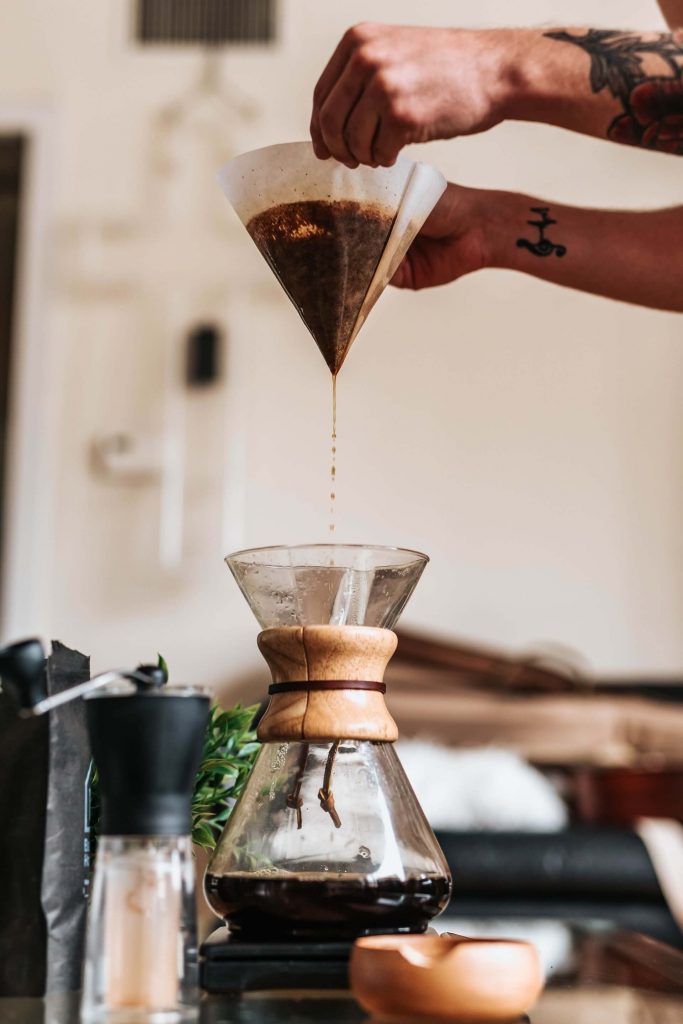
The manual drip coffee is similar to Turkish coffee which involves waiting for the coffee to drip through a filter. The filter stops coffee sediments from entering the end result and the slowness of the water passing through allows more flavor and strength to be passed through.
The coffee grounds are placed inside the coffee filter, water is then poured into the filter and the coffee then drips through the filter, filling up a cup or container underneath which is the coffee you will drink.
This kind of brewing method was a very common way of brewing coffee in North America. Nowadays, there are two ways you can prepare drip coffee, you either use a drip coffee machine or bags of drip coffee. There are travel options and more unique designs entering the market every day.
Actual drip coffee is brewed using an automatic drip coffee machine – many coffee fanatics refer to pour-over coffee as the manual drip coffee as essentially, it still drips.
What is a Pour-Over Coffee?
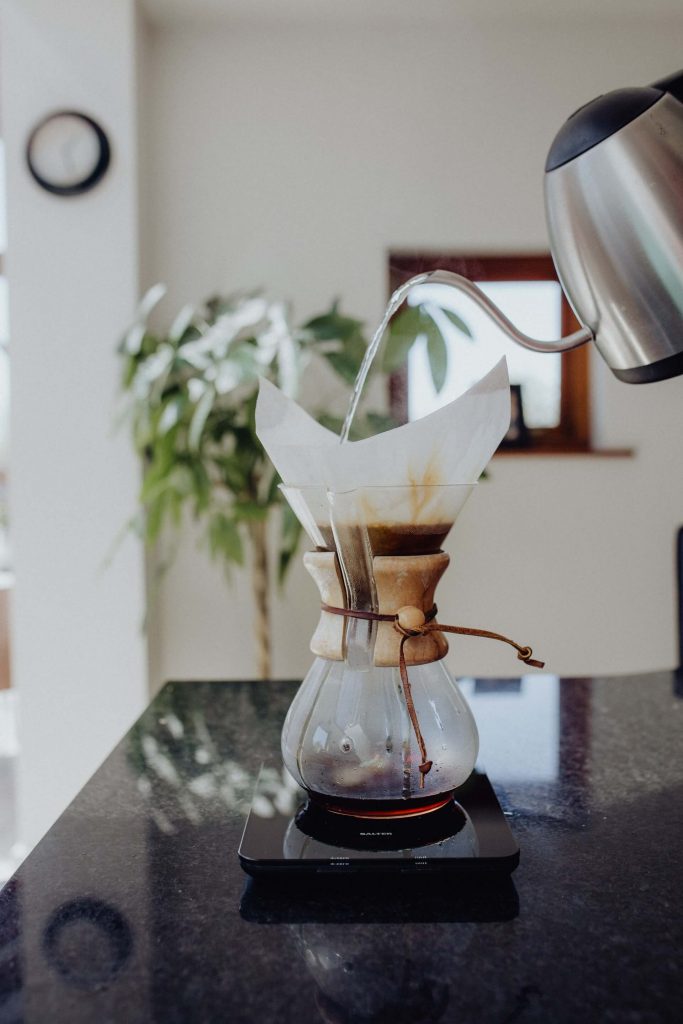
This coffee brewing method involves pouring hot water over the grounds of coffee that are inside a filter, and then the coffee is extracted into a carafe or mug. This method might seem very similar to drip coffee but what sets it apart is that the coffee was extracted by hand-pouring the hot water over the coffee grounds.
This method is much slower but can end up producing a stronger and more flavorful result. It is best to use a gooseneck kettle and pour very slowly to avoid ruining the coffee. The slower the better.
The best coffee beans to be used for a pour-over coffee are single-origin coffee beans as pour-over coffee allows the flavors and aromas to flourish.
Drip Coffee vs Pour Over Coffee 5 Key Differences
When it comes to drip coffee and pour-over coffee, the way the coffee is extracted between these two methods is quite the same. But don’t be fooled, these two coffee brewing methods are slightly different from each other.
There are at least 5 differences between these brewing methods when it comes to drip coffee vs pour-over.
1. The Quality of the Brewed Coffee
Depending on the person drinking the coffee, the quality of coffee is very subjective. Some people want their coffee light and medium roasted, while others would prefer a strong dark roast. Because of this, most people prefer manual brewing like drip coffee and pour-over coffee since it allows different variants of coffee flavors to bloom and create the best quality coffee product.
When it comes to the coffee quality, using a drip coffee method, produces only a fairly good cup of joe but the way you do it is easier compared to a pour-over coffee method.
The pour-over coffee method is far from being a simple coffee brewing method. It needs a certain level of skill and attention. If you’re able to use the tools properly and develop the required skills for a pour-over, then you deserve the highest quality of coffee that it makes.
On this one, we would have to say that the pour-over coffee would produce a higher quality coffee than the drip coffee. Only slightly though. As the pour-over is a slower process, it allows for more flavors and oils to build up and produces a better quality final result.
This can be subjective however and would depend on the type of beans, the grind, the age, type of brewing device, and many other factors.
2. The Consistency of the Brewed Coffee
Dealing with the subject of consistency of coffee using manual coffee brewing, it’s all about maintaining control over the pouring process. The ability to be able to control the flow of water, the concentration of the coffee grounds, and the time it takes to brew coffee are important to extract the highest quality and consistent cup of coffee. This means that you have to make sure that the coffee grounds are not under or over-extracted.
With drip coffee machines, compared to pour-overs, you don’t have much control over the drip since the machine/device does it for you. With pour-over, it allows you to have full control over the drip style. To help you with the control, a gooseneck kettle is needed to pour out the hot water evenly into the coffee grounds.
The flavor of the coffee when using a pour-over method, you have to know that it’s not only the kind of beans that you use but also has to do with the ratio, quantity, water temperature, and the pouring style.
With consistency, we would say that the drip coffee is better here. This is because the process is generally the same and does not require manual control like a pour-over does, resulting in less room for human error.
3. The Temperature of the Brewed Coffee
The ideal temperature for brewing coffee is 195 to 205F. This allows for the perfect extraction of your brew. Drip coffee machines sometimes can’t attain the ideal temperature for the right extraction of coffee. For the times they do, they don’t usually stay hot, which is desired to get the best flavor of the coffee.
The pour-over method provides an even temperature control throughout the extraction process. But can also depend on your kettle, time until pour, and the time it takes you to pour. If you leave the boiled water for 10 minutes, then start to pour, you could end up with a weak coffee.
Either of these two methods produce the same result in terms of temperature and there are too many factors involved. If you were to do everything in a timely fashion, then the pour over would probably produce the best result.
4. The Flavor of the Brewed Coffee
The way to get the best flavor of the coffee is to be able to have more time to pull out the flavors and oils from the coffee grounds, known as the extraction process. There is a balance though, you can over-extract, and you can also under extract.
Both coffee methods can produce a tasty result, but when it comes to getting a bold and strong cup, then the pour-over coffee method wins hands down. This is because the time it takes to brew the coffee is much longer when using pour-over coffee compared to the drip coffee method.
Obviously, if you pour the water very quickly, then you won’t get this result and the coffee will be ruined. So be sure to pour slowly and evenly across all the coffee grounds. Also, use a gooseneck kettle, so you don’t pour heavy amounts of water from a kettle onto the coffee.
5. The Time it Takes to Brew Coffee
Just as mentioned before, the time it takes to extract the coffee with the pour-over coffee method takes longer compared to the drip coffee method. When using a drip coffee machine, all you need to do is add in water, put the filter, and pour the coffee grounds into the filter. Then press the start button and just wait until the brewing process is done.
For the pour-over coffee method, not only does it take longer to extract the coffee, but the preparation before the brewing process is also long. Unlike the drip coffee machines, you have to heat the water first before you can start the extraction process. Then you need to prepare your tools for the process. After all this, then you can start the process of pouring the hot water over the coffee grounds.
This means that for those people who have less time to spare when brewing, the drip coffee method is the way to go.
Overall we recommend both of these methods for different reasons:
For convenience and still good coffee – The Drip Coffee Method
For a stronger taste and more enjoyment brewing – The Pour Over Coffee Method
There is no need to compare prices between the two as the equipment would cost roughly the same. But it really is down to personal preference when choosing which of these coffee brewing methods to use. Our pick for drip coffee vs pour over coffee would be the pour over method, due to the stronger flavor.

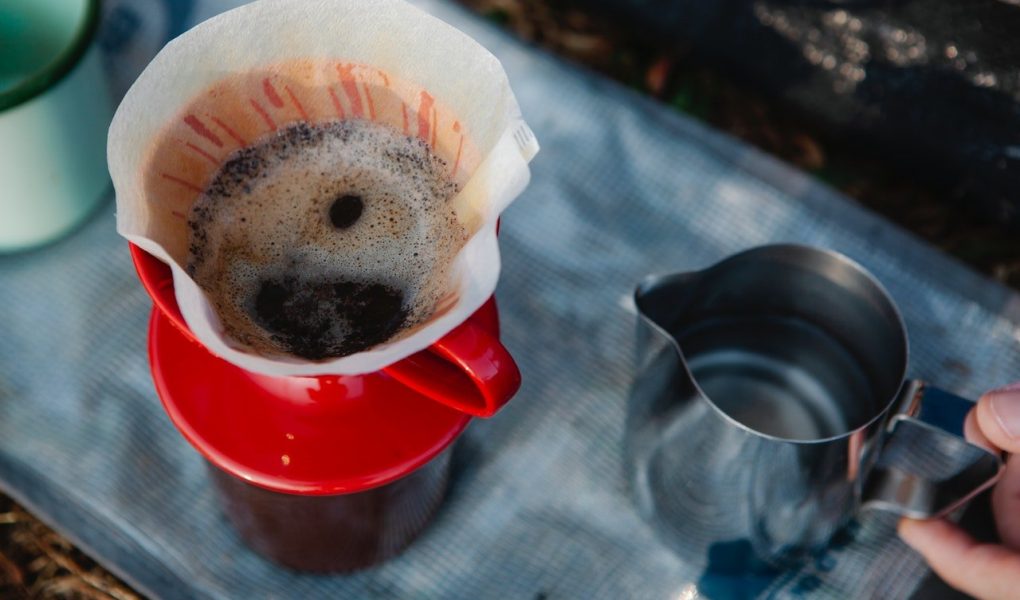
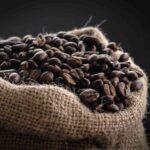
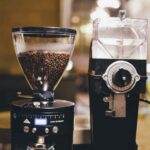
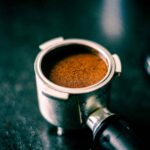
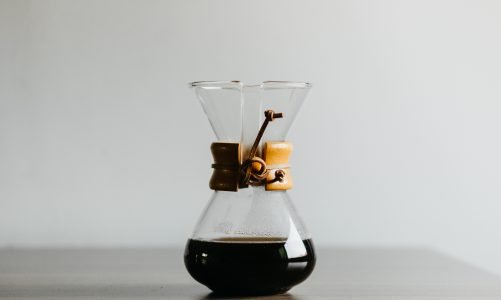
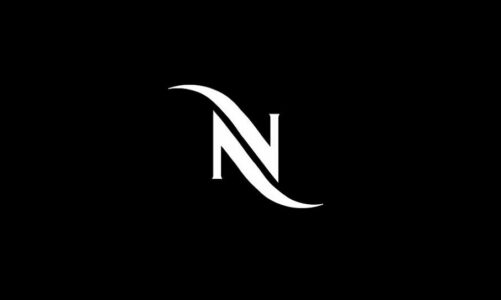
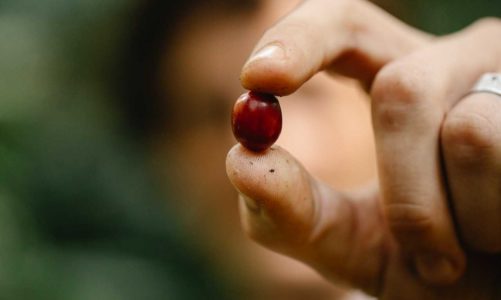
That was a fascinating comparison! Pour overs provide a more extraordinary taste than standard drip coffee because of the difference in brewing techniques. Though both can be delicious, drip coffee can pale compared to the vibrant flavor of pour-over coffee.